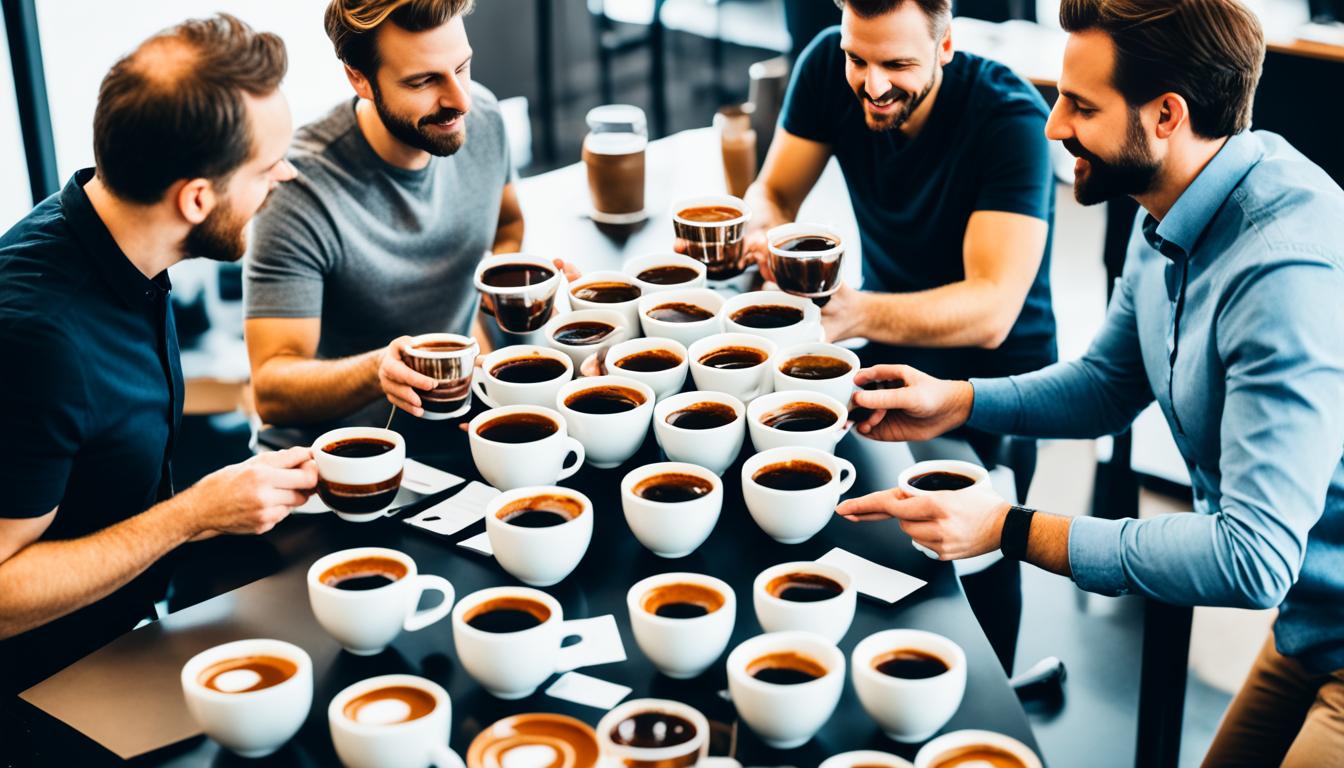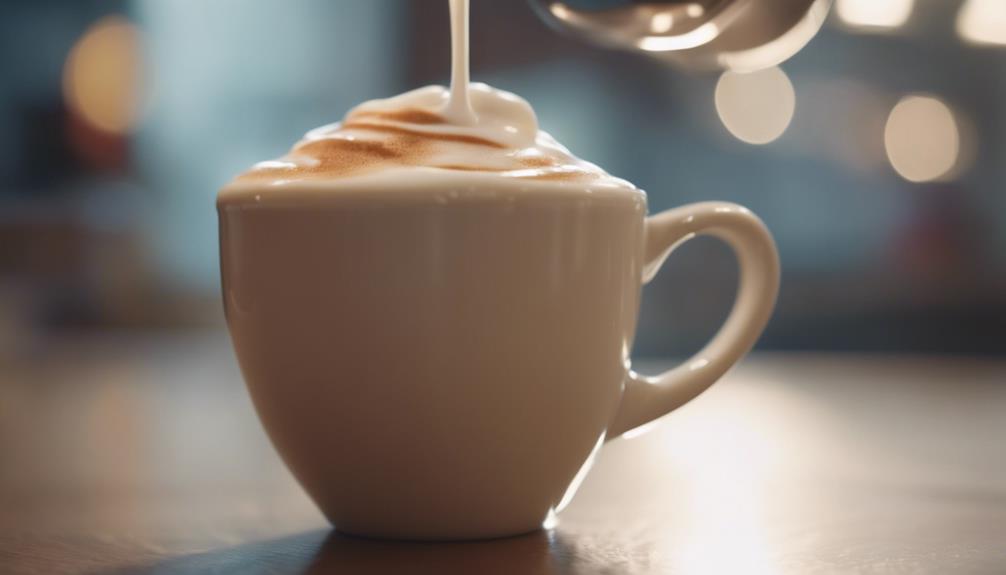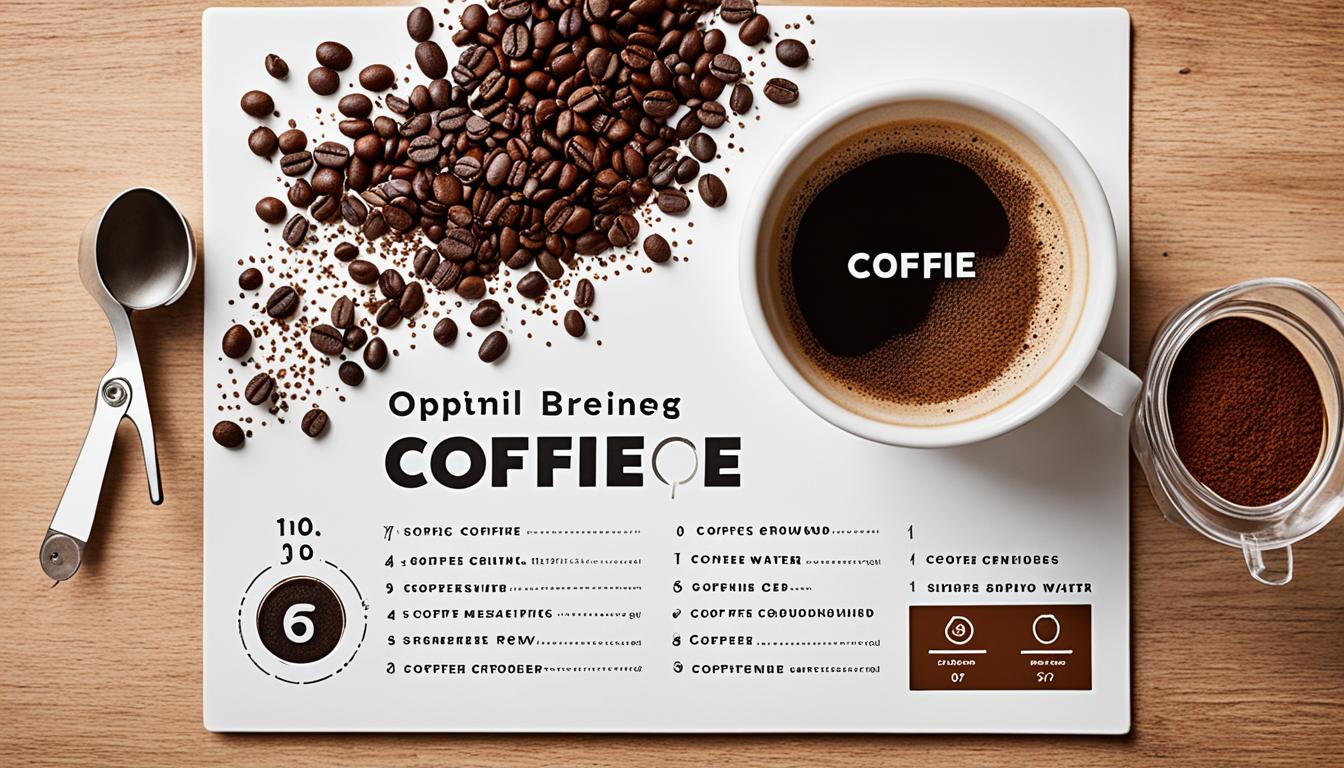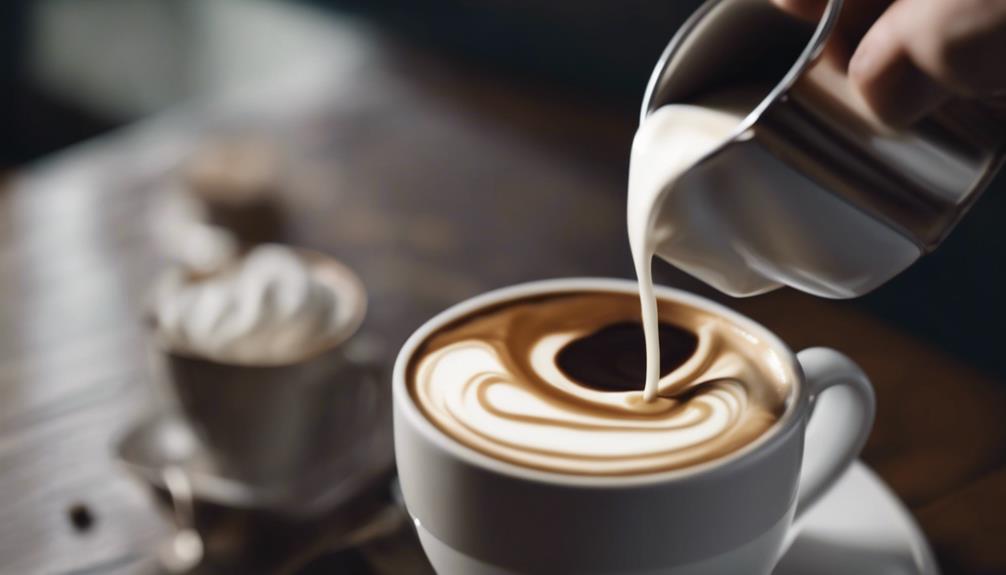Did you know that coffee contains more than a thousand aromatic compounds? These intricate flavors are what make coffee cupping an indispensable art. The Specialty Coffee Association (SCA) has established standardized protocols for cupping, which allow professionals to rate coffees on a scale from 6 to 9.5, with 9.5 being considered exceptional.
This process helps find any defects or off-flavors. It also uncovers unique flavor profiles. This turns coffee lovers into true connoisseurs. Understanding these tasting techniques is crucial for both newcomers and experts in the field.
The coffee world keeps evolving. Thus, mastering cupping is vital for those wanting to fully appreciate this drink. In one session, professionals may evaluate 3-6 coffees. They look at everything from aroma to body. They use precise coffee to water ratios for accurate flavor evaluation. Additionally, cupping allows professionals to assess the acidity and aftertaste of different coffee beans. It also provides a platform to gauge the caffeine content in coffee, which is important for consumers who are sensitive to caffeine or seeking a certain level of energy boost from their beverage. By honing their cupping skills, professionals can ensure that they are providing accurate and reliable information to coffee enthusiasts and customers.
Key Takeaways
- Coffee cupping is crucial for assessing quality and developing flavor profiles.
- Standard cupping protocols are set by the Specialty Coffee Association.
- Coffees are scored on a scale between 6 to 9.5 during cupping sessions.
- Professionals typically evaluate 3-6 coffees at once for comparative analysis.
- The art of cupping helps in identifying defects and enhancing new coffee blends.
- Understanding coffee tasting techniques is essential for professionals in the industry.
The Importance of Coffee Cupping in Quality Assessment
Coffee cupping is key for checking coffee quality. It checks both green and roasted beans well. Industry pros use it to deeply inspect aroma, flavor, and aftertaste. It requires accurate methods and sharp sensory skills.
The Specialty Coffee Association offers standard forms for cupping. These help buyers and roasters choose good coffee batches. They start by looking at several samples. For each coffee type, they prep at least three cups. The right water temp is around 200°F. They use 8 grams of coffee for every 150 ml of water.
Graders let the coffee steep for 4 minutes before tasting. This helps them catch each sample’s unique taste. By slurping from special spoons, they notice even the subtle flavors. They mark down different aromas like floral and fruity. This records the complexity and body of each coffee.
Cupping is a basic step in coffee evaluation. It sets a professional standard. It also helps coffee fans explore different tastes and smells. This grows their love for coffee even more.

Understanding the Basics of Coffee Cupping
The basics of coffee cupping are about a method used worldwide to check coffee’s quality. This method is key for making sure every coffee roast tastes great. It starts with setting up grinders, bowls, and water in a quiet place.
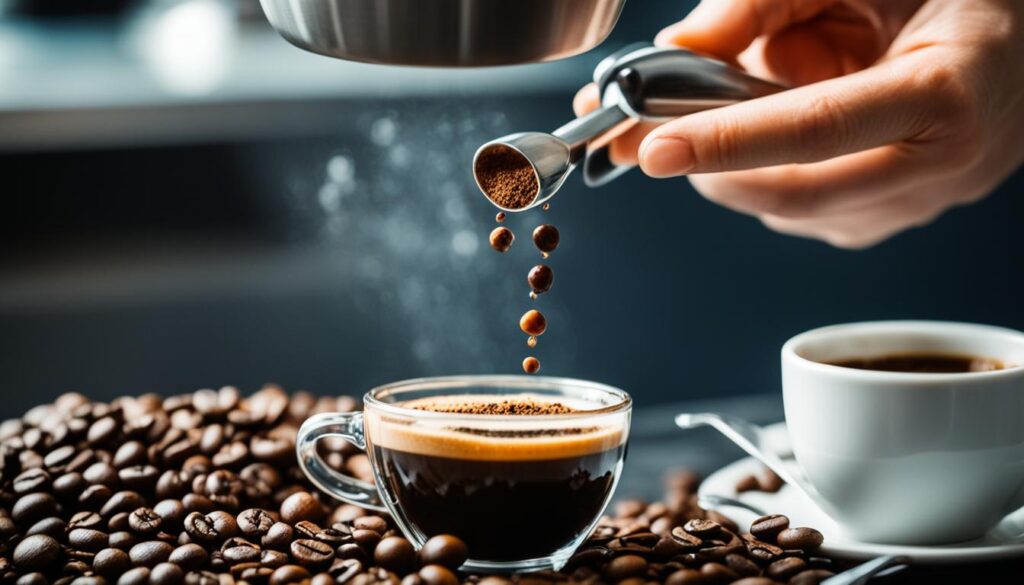
At a cupping session, people first smell the ground coffee. Then, they brew it in bowls, using a special ratio for consistency. They grind the coffee to a size like table salt for a good taste test.
They look for things like the coffee’s body, its acidity, and sweetness. The coffee flavor wheel helps identify many different tastes and smells. This way, people can talk about what they taste and learn from each other.
Now, coffee shops are starting to host their own cupping sessions. This lets customers learn about where their coffee comes from. It’s becoming a bit like wine tasting, where you learn and enjoy.
The cupping process is a fun way to learn more about coffee. Getting everything ready before you start makes the tasting better. This focus helps everyone enjoy and understand coffee’s different tastes.
The Art of Cupping: How Professionals Taste and Evaluate Coffee
Cupping is key in coffee tasting, helping experts evaluate coffee profiles. This process involves grinding coffee beans to a uniform size. This ensures each coffee sample is judged fairly.
A special, quiet, and bright space is used for cupping. It lets tasters concentrate on examining the coffee. They infuse the coffee grounds for exactly four minutes before they start their evaluation. They check the aroma, taste, acidity, and body carefully.
Coffee tasters use a standard scoring system during evaluations. It shows the bean quality and helps experts communicate. This detailed process helps find unique flavors for custom blends or specific customer requests.
During cupping, tasters note the coffee’s sweetness, mouthfeel, and aftertaste. They spot any bean defects and inconsistencies. This helps improve roasting techniques. Knowing these details makes coffee tasting better.
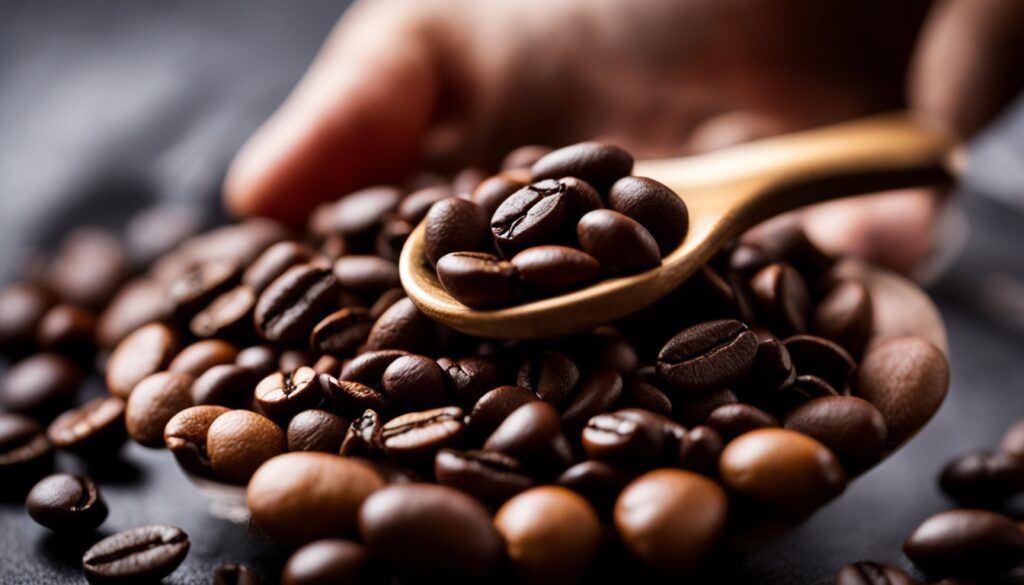
Mastering cupping allows pros to identify subtle differences in coffee. Professionals can notice details that others might miss. Knowing the common errors, like steeping the coffee too little or too much, improves test accuracy.
| Key Aspects of Cupping | Description |
|---|---|
| Environment | Quiet, well-lit space without distractions |
| Grinding | Beans ground to a consistent size |
| Steeping Time | Four minutes for optimal flavor extraction |
| Evaluation Criteria | Aroma, flavor, acidity, body, aftertaste |
| Scoring System | Standardized system for quality assessment |
Cupping is crucial in the coffee world, enhancing the understanding of coffee’s varied flavors. Knowing how to cup leads to better choices and a deeper enjoyment of every cup.
Factors Influencing Coffee Flavor Profiles
The world of coffee flavors is wide and fascinating. It’s greatly shaped by where and how coffee grows. The way coffee beans are processed matters a lot. But their origin and the growing conditions also play a big part. These factors make each coffee brew complex and unique.
Origin and Terroir
The place where coffee comes from is very important. The concept of terroir includes things like soil and climate. For instance, coffee from volcanic soil is often sweeter and more complex. There are over a thousand aroma compounds in coffee. That’s what makes each coffee’s taste unique.
Climate and Altitude Impact
Climate has a big effect on coffee flavors. The Coffee Belt has varied weather patterns that influence the beans. High-grown coffees, like those from Ethiopia, have fruity and floral notes. This is due to slow ripening that lets sugars develop more. This makes the flavor richer.
In contrast, coffee from lower altitudes is milder and less acidic. This coffee is also usually cheaper. There’s such a wide variety of coffee flavors. They suit many different tastes.
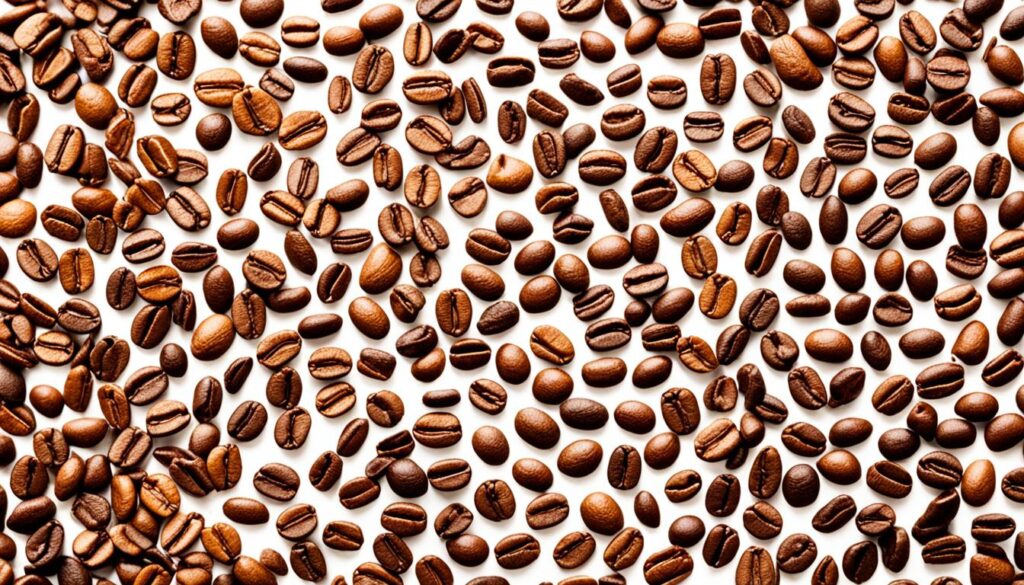
| Altitude (meters) | Coffee Flavor Characteristics |
|---|---|
| Above 1900 | Fruity, floral, and complex flavors |
| Between 1200-1900 | Balanced acidity, moderate sweetness |
| Below 1200 | Milder taste, lower acidity, less complexity |
Processing methods also affect taste. Washed methods give clean and tart fruit flavors. Natural methods bring out a strong sweetness like blueberry jam. These methods add to the variety of coffee flavors we enjoy. Coffee truly offers a world of delightful tastes.
Key Processing Methods and Their Flavor Implications
For coffee lovers and experts, knowing the different coffee processing methods is key. Each method changes how the final cup tastes. It gives unique features that share the coffee’s origin and journey. The main methods are washed or wet processing, natural or dry processing, and honey or pulp-natural processing. These methods shape the flavor notes and the coffee experience as a whole.
Washed or Wet Processing
With washed processing, coffee cherries are fermented to remove outer layers. This boosts the coffee’s acidity and flavor clarity. It gives a clean and bright cup, often with lively citrus flavors. This careful process makes sure only top-quality beans are selected. These beans have no off-flavors, ensuring a great taste for coffee drinkers.
Natural or Dry Processing
In contrast, natural processing dries cherries in the sun. The seeds pick up flavors from the pulp. This results in sweeter, fruitier coffee. However, drying conditions can vary, sometimes causing off-flavors. Yet, done well, this method produces unique and complex flavors. Coffee fans love these for their distinct taste profiles.
Honey or Pulp-Natural Processing
The honey or pulp-natural process finds a middle ground between washed and natural methods. It removes the cherry pulp but keeps some mucilage. This gives Honey processed coffee a special sweetness and a well-balanced acidity. The flavors often resemble citrus fruits with a syrupy feel. This enhances the drinking experience. It’s a method that produces vivid flavors, making it a favorite among specialty coffee roasters.
